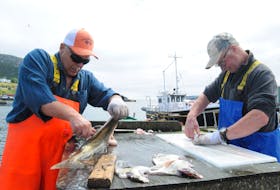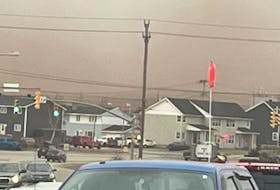Unless drastic action is taken by humans, more than one million species of plant and animal life face extinction within the next handful of decades.
That was the bleak conclusion reached recently by a United Nations study, compiled from research sources around the world. The report comes from the Intergovernmental Science-Policy Platform on Biodiversity and Ecosystem Services.
Given these stark findings, SaltWire Network journalists across Atlantic Canada are taking a closer look at some of the flora and fauna at risk in our own provincial backyards.
EFFORTS CONTINUE TO REJUVENATE AMERICAN MARTEN POPULATION IN CAPE BRETON HIGHLANDS

The American marten was almost gone from Cape Breton 18 years ago. But it’s not been forgotten. The marten ended up on the Nova Scotia Endangered Species Act in 2001. However, in 2007, the Nova Scotia Department of Natural Resources — now called Department of Lands and Forestry — stepped in through a partnership project in hopes of changing that. Read the full story here.
NEWFOUNDLAND AND LABRADOR HAS MORE THAN 90 PER CENT OF THE WORLD’S BOREAL FELT LICHEN, BUT IT’S AT RISK

Bill Montevecchi, a professor at MUN’s faculty of science worries about species which may soon be on the at-risk list if prevention measures aren’t taken. In particular, he said the Leach’s storm-petrel, a small seabird that has the world largest colonies in this province — Baccalieu Island and Witless Bay islands — should be noticed. In the last 30 years, the populations have declined by half in the province, Montevecchi said — from six to three million. Read the full story here.
P.E.I.'S PIPING PLOVER AND OVER ONE MILLION OTHER SPECIES RISK EXTINCTION: UN REPORT

Piping plovers are living precariously on P.E.I. Despite more than 30 years of conservation efforts, fewer than 100 of the shore birds are returning to the Island annually to mate. The species, small enough to be cradled in the palm of your hand, is just one of over a million species of plants and animals that a new report from the United Nations says are in grave danger of disappearing in the next 50 years. Read the full story here.
NEW SAFE HAVEN FOR ENDANGERED REPTILES IN LUNENBURG COUNTY

The Nova Scotia Nature Trust purchased a 93 acre property in Barren Meadow, near the community of Colpton, Lunenburg County, creating a new protected area for some of Canada’s most endangered reptile species. “The stars aligned,” with the funding and the location of the property, which contains critical habitat for the species involved said Ross Firth, director of Conservation at Nova Scotia Trust. Both Blanding’s turtles, and the Eastern Ribbonsnake live in the new protected area. Blanding’s turtles are listed as endangered. Only around five hundred Blanding’s turtle survive in the wild today. Only one percent of their hatchlings survive to adulthood. Read the full story here.
UNITED NATIONS REPORT PAINTS BLEAK PICTURE FOR P.E.I.’S BROWN BAT

Here on P.E.I., one animal, in particular, the little brown bat, can serve as a warning as to just how quickly human influence can turn the fortune of a species. Only a few years ago the little brown bat was one of the most common bat species in North America, but a fungal disease called white-nose syndrome, which prematurely forces the animals out of winter hibernation, has dramatically reduced their numbers over the past decade. White-nose syndrome was first detected on P.E.I. in 2013. The small, winged mammal is now listed as endangered in Canada under the Species at Risk Act. Read the full story here.









